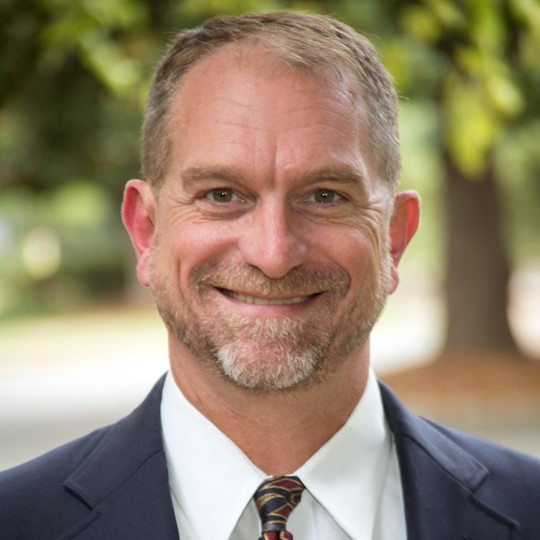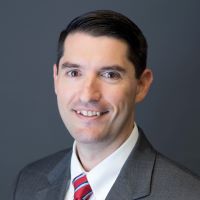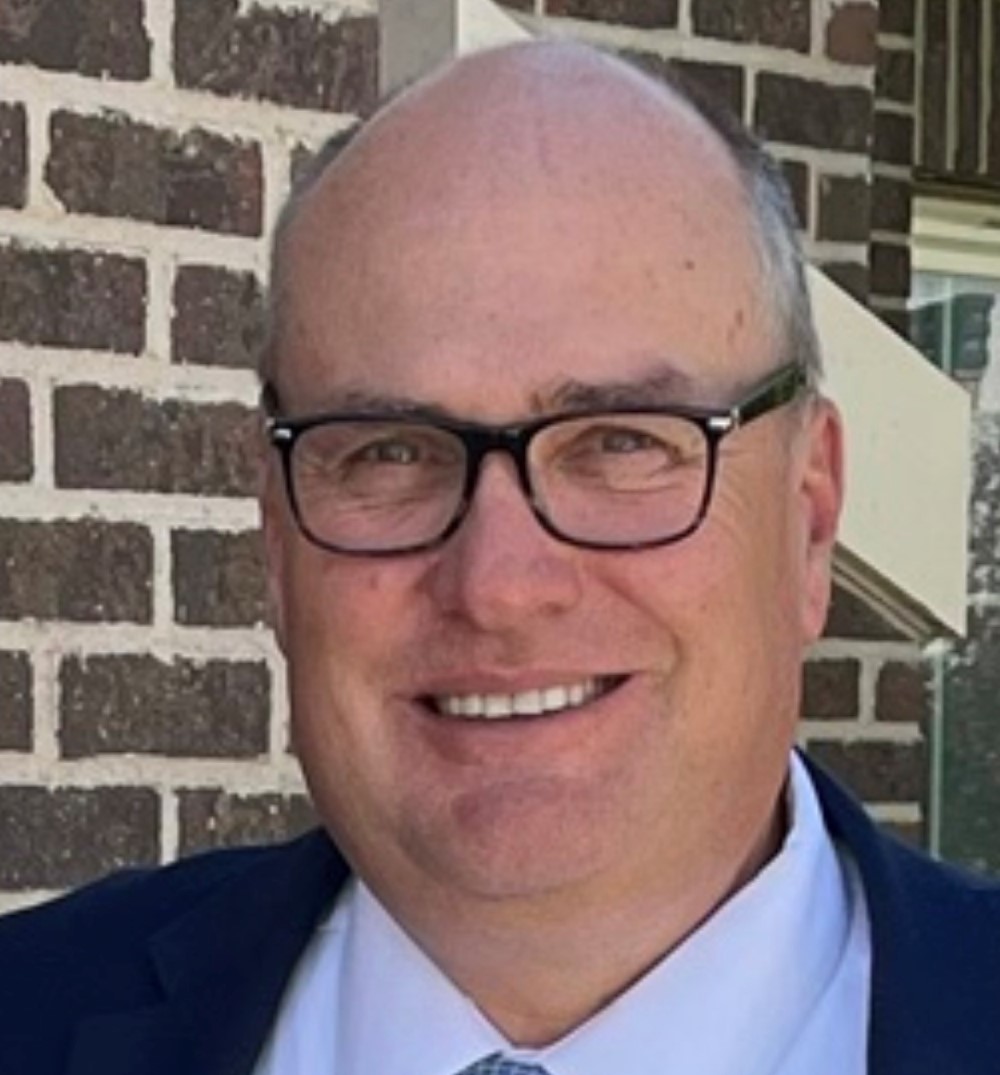Concurrent Session II | May, 8 | 11:15 – 12:45 PM MT
Breakout 1 | Breakout 2 | Breakout 3 | Breakout 4 | Breakout 5
Return to Schedule
Session A2.1
Condition-based management management and NEPA for ecological restoration projects | NEPA
11:15 – 11:45 AM
| About the Presentation |
|
Natural and anthropogenic forces are creating large-scale disturbances to national forests. This has prompted federal agencies to adopt strategies to try and manage the impact of these disturbances through flexible planning and implementation practices. Condition-based management management (CBM) is an ongoing decision-making framework that allows for flexibility in management actions. This framework has been used in conjunction with the National Environmental Policy Act (NEPA) to accomplish large-scale forest restoration treatments on landscapes experiencing or are at risk of a large-scale disturbance.
This case study provides information on the foundation of CBM and how it has been utilized in planning and implementation by the US Forest Service. The planning and implementation process is illustrated through the Spruce Beetle Epidemic Aspen Decline Management Response (SBEADMR) project in southwest Colorado. This case study is meant to be instructive for planners and policymakers considering the use of CBM and demonstrates how a collaborative planning and implementation process can be used to manage a large-scale disturbance while adhering to the mandates of NEPA. This report details the 9-year progression from project proposal to implementation through the adaptive management process. We reviewed meeting notes, NEPA documents, participated in public meetings, and gathered lessons learned through informal interviews with process participants. While the focus of the case study is on SBEADMR, the planning and implementation processes can and have been applied in other areas experiencing large-scale disturbance.
Session Objectives:
- Presentation on condition-based management management within the context of NEPA
- How it has been implemented through a case study of a project in southwest Colorado
- Best practices
|
| About the Speaker |
|

Jarod Dunn
Research Associate
Colorado Forest Restoration Institute
Jarod joined the Colorado Forest Restoration Institute (CFRI) at Colorado State University, Fort Collins in 2020 to contribute to the development of socioeconomic support products for CFRI including economic impact analysis, economic surveying and monitoring, and NEPA analysis. Prior to working at CFRI Jarod contributed to many large-scale natural resource projects both as a consultant and as a research associate. Jarod holds a bachelor's degree in business and a master's degree from Utah State University in resource and environmental economics. He has taught classes on NEPA, micro and macroeconomics, forestry economics, and sustainable energy development.
|
Session A2.2
Expanding Parks & Trails Using the Recreation and Public Purposes Act | NEPA
11:45 – 12:15 PM
| About the Presentation |
|
In the Phoenix metropolitan area, the Maricopa County Parks and Recreation Department has utilized the Recreation and Public Purposes (R&PP) Act of 1926 since the early 1960s to develop an extensive park system by acquiring and leasing land from the Bureau of Land Management. Pinal County as well as the City of Buckeye are also utilizing the R&PP Act to plan major regional parks in their communities. The speaker will discuss the R&PP Act and how the National Environmental Policy Act (NEPA) compliance is completed as part of the process. The speaker will also propose new ideas for utilizing the R&PP Act to develop bikeways or other public and recreation amenities utilizing this act.
Session Objectives:
- Understand how to utilize the R&PP Act to expand park and recreational opportunities while working with the Bureau of Land Management.
- Apply techniques for developing and maintaining effective partnerships between local, state, and federal agencies.
|
| About the Speaker |
|

Eileen Baden, AICP
Speaker information coming soon!
|
Session A2.3
How NEPA and Federal Watershed Planning Intersect | NEPA
12:15 – 12:45 PM
| About the Presentation |
|
Aging flood control and water supply infrastructure, combined with increasing flood risk from climate change, are creating challenges for watershed managers across the country. Federal watershed planning takes a systematic approach to considering the problems within a watershed and identifying watershed-level solutions. Many federal agencies, including the US Army Corps of Engineers, Natural Resources Conservation Service, Bureau of Reclamation, and Federal Emergency Management Agency, frequently conduct watershed planning under NEPA. We will describe how NEPA and the federal watershed planning process intersect when implementing actions to reduce flood risk, rehabilitate water resource infrastructure, and restore degraded ecosystems. Understanding these concurrent processes is especially important for NEPA practitioners due to significant funding increases for watershed planning in the 2021 Infrastructure Investment and Jobs Act. Best practices for conducting NEPA within the federal watershed planning process include 1) using an ecosystem services framework to identify impacts, 2) integrating consequence analysis to identify and compare risks among alternatives, 3) incorporating future land use analysis, 4) evaluating the social and racial equity effects of flood risk and water supply access, and 5) evaluating economic activity impacts in relation to flood risk and water supply.
We will present these best practices using case studies from recent federal watershed planning projects in Arizona, North Dakota, New Hampshire, and Maryland. These projects differ in purpose and need and geographic area, but each demonstrates key best practices for integrating NEPA and watershed planning. -Brawley Wash Watershed Plan and Environmental Assessment, Pima County, AZ ; Brawley Wash is characterized by severe erosion and sedimentation due to former irrigation-based landscape changes that have broken natural flow patterns. Conservation measures for ecosystem restoration and groundwater recharge are evaluated in the watershed plan.-North Branch Park River Watershed Plan and Environmental Assessment, Pembina County, ND; Climate change induced flooding patterns have impacted commercial agriculture and caused nutrient loading in downstream waterbodies. The watershed plan resulted in the selection of an alternative to provide flood control and reduce nutrient runoff. -Souhegan River Watershed Plan and Environmental Assessment, Hillsborough, NH; Four high-hazard dams in the watershed are nearing the end of their service life and don't meet current design standards. The watershed plan is evaluating alternatives to maintain flood protection and potable water supply for downstream communities. -Upper Marlboro Flood Risk Management Study, Prince George's County, MD; This environmental justice community in suburban Washington, DC has experienced severe impacts from past flood events. The flood risk management study used innovative approaches to include the community in identifying flood risk impacts and potential solutions.
Session Objectives:
- To understand how NEPA and the federal watershed planning process work together when advancing projects to reduce flood risk, rehabilitate aging water resource infrastructure, and restore degraded ecosystems.
- To learn best practices for conducting NEPA under the federal watershed planning process.
|
| About the Speaker |
|

Katherine Sharpe, AICP, ENV-SP
Principal Economist
Gannett Fleming, Inc.
Kate Sharpe is a principal economist at Gannett Fleming, Inc. with more than 20 years of experience performing benefit-cost analyses for water resource projects. Kate is an expert in consequence analysis and has completed flood damage assessment modeling for more than 30 dams across the United States. At Gannett Fleming, she is the National Environmental Policy Act (NEPA) group manager in Pennsylvania directing technical analyses in support of NEPA compliance for federal, state, and local clients. Kate completed a master's degree in Applied Economics and Environmental Management at Cornell University in 2003.
|
Back to Top
Session B2
Biological Working Group's Regulatory Update- MBTA, ESA, BGEPA, and More | Bio
11:15 – 12:45 PM
| About the Presentation |
|
The Biological Working Group follows regulations such as the Endangered Species Act, Migratory Bird Treaty Act, Magnuson-Stevens Conservation and Management Act, Marine Mammal Protection Act, and Bald and Golden Eagle Protection Act, among others. This session will provide regulatory updates on what our team thinks are the most significant regulatory shifts that impact the environmental profession. Our presenters will provide insight into how these changes will affect the analysis and implementation of these statutes. As of now, we see significant interest in the following three topics:1)Endangered Species Act- United States Fish and Wildlife Service (USFWS), Bureau of Land Management, and National Oceanic and Atmospheric Administration have all issued new policies regarding compensatory mitigation for protected species.2)Migratory Bird Treaty Act- USFWS will issue a new proposed permit process before the 2023 annual conference. 3)Magnuson-Stevens Conservation and Management Act, Marine Mammal Protection Act- implementation of these statutes for offshore renewable energy.
Session Objectives:
- Provide timely and relevant information to the NAEP members
- Provide the highlights of the Biological Resources Working Group's regulatory updates from the year
- Provide awareness of the Biological Resources Working Group and grow our participation
|
| About the Moderator |
|

Nick Morgan
Director of Mitigation Solutions
The Conservation Fund
Nick Morgan is the Director for Mitigation Solutions at The Conservation Fund (The Fund). He focuses on developing and implementing compensatory mitigation projects and programs to offset environmental impacts from infrastructure development across the United States. This includes mitigation for impacts to threatened and endangered species, historic and cultural resources, state and federal lands, and migratory birds. His team facilitates high-quality mitigation projects and programs that have allowed energy and infrastructure developers to meet their required and voluntary mitigation commitments. A popular mitigation fund that Nick manages is the Range-wide Indiana Bat and Northern Long-eared Bat In-Lieu Fee Program, which was established in 2017.
|
| About the Speaker(s) |
|

Brian Wooldridge
Fish and Wildlife Biologist
United States Fish and Wildlife Service
Brian has worked for the Fish and Wildlife Service for over 19 years. He brings a strong conservation ethic and experience in recovery planning, inter-agency consultation, and NEPA. Brian grew up in central Iowa, spending most of his free time fishing and hunting pheasant, quail, and turkey. Hunting during and after the 1985 Farm Bill motivated him to pursue a career in conservation. He attended Iowa State University for his undergraduate degree and then University of Texas-El Paso for graduate school. Brian and his family enjoy mountain biking, camping, hiking, hunting, and fishing, especially turkey hunting and saltwater fly fishing.
|
|

Michael Mayer
Senior Environmental Planning Lead
HDR, Inc.
Mike, a senior environmental planning lead with HDR, has over 20 years of experience working on federal, state, and private client projects related to energy, natural resource management, and mining. Michael uses his unique training as both a biologist and a lawyer to address resource issues in a scientifically and legally defensible manner. With his training, he is able to navigate the myriad of regulatory requirements applying ecological knowledge to planning and compliance efforts, navigating natural resource laws such as the Endangered Species Act and Migratory Bird Treaty Act. Michael is the current Vice President of the NAEP and the Minnesota AEP
|
|

Christine Magers, CWB
Environmental Program Lead
Balcones Field Services
Christine is the Environmental Program Lead for Balcones Field Services (BFS). She joined the BFS team in October 2022 and is continuing her passion and career in environmental permitting and NEPA assessments. She has provided environmental and regulatory support for private and public clients across the country for over 17 years. She also serves as an elected board member of the National Association of Environmental Professionals. Her commitment extends into her local community as well including a successful grant application award to repair tanks for the Amos Rehabilitation Keep in Port Aransas, Arbor Day tree planting, sea turtle nest patrolling and hatchling releases, volunteering and giving with the 100 Women of the Coastal Bend, and speaking at area schools regarding STEM careers.
|
Back to Top
Session C2
The Geographic Approach: Revolutionizing Transportation Planning | Transportation
11:15 – 12:45 PM
| About the Presentation |
|
Transportation planning, permitting, and public engagement processes can be lengthy and complex. Traditional methods to engage with communities, agencies, and other relevant stakeholders have relied on often dense, static maps and technical documents to convey proposed project benefits and potential impacts. Geographic Information Systems (GIS) and digital tools are revolutionizing how we communicate with stakeholders; putting relevant data at their fingertips wherever and whenever they find it convenient, enabling more engaging and robust dialogue and project co-creation, and expanding equity through formats that are accessible for people no matter their language or ability. This session will highlight spatially-enabled tools being used to revolutionize transportation planning, including the delivery of the nation's first fully digital Environmental Impact Statement, and will discuss the benefits these tools have for the process, engagement, and outcomes.
Session Objectives:
- To frame solutions for a common industry challenge that utilize industry-standard technologies and approaches
- To discuss novel approaches and integrations that facilitate complex workflows, such as EIS
|
| About the Speakers |
|

Jessica Rietz
Senior Environmental Planner
AECOM
Jessica Rietz is a Senior Environmental Planner with AECOM. She has over sixteen years of experience in the environmental review process and transportation planning in the southwestern U.S. Her current focus is on NEPA project management for large transportation projects, but she has a technical background in traffic noise analysis, Clean Water Act permitting, and environmental justice analyses. Jessica has a degree in Environmental Sciences from Northern Arizona University. She lives in Phoenix, Arizona with her husband and two young children and enjoys hiking, baking, and reading.
|
|

Mehmet Secilmis, MS, GISP
Senior Global Account Manager - AEC & Environmental
Esri
Mehmet Secilmis is a global account manager for Esri, a leading geospatial software company. He is with Esri's AEC & environmental practice team and is based in San Antonio, TX. He works with engineering and environmental firms to discover the power of GIS and solve the real problems they have. He has over 20 years of diverse experience in environmental science/engineering and GIS. His educational background includes an MS degree in Environmental Technology and an MS degree in Management with a concentration in Management of Technology.
|
Session D2.1
Waters of the United States: Meandering Regulatory Riffles, Pools and Runs | Water
11:15 – 12:15 PM
| About the Presentation |
|
Since the U.S. Supreme Court’s unanimous 1985 Riverside Bayview Homes v.US decision expanded the definition of “waters of the United States” (WOTUS) to include more than just the nation’s “navigable waters,” debate on what should be considered a WOTUS has continued and, through much of this time, been complex and heated (e.g., SWANCC v. US (2001), Rapanos & Carabell v. US (2006)). For more than a decade following Rapanos, the WOTUS definition has been based on the significant nexus test, as defined by Justice Kennedy’s concurring opinion, which disagreed with much of Justice Scalia’s plurality opinion.
Some viewed the Obama Administration’s 2015 Clean Water Rule’s expansion of the WOTUS definition as an “executive over-reach.” Opposition to the 2015 Rule was swift. Multiple federal courts enjoined the 2015 Rule, and after former President Trump’s 2017 Executive Order on Restoring the Rule of Law, Federalism, and Economic Growth by Reviewing the ‘Waters of the United States’ Rule, the 2015 Rule was repealed. Some have said: Trump flushed Obama’s Clean Water Rule. The pre-2015 WOTUS definition was re-codified in 2019. The Trump Administration’s Navigable Waters Protection Rule (NWPR), which re-defined WOTUS, became effective in June 2020. In August 2021, the U.S. District Court for the District of Arizona remanded and vacated the NWPR nationally, in spite of the Biden Administration’s clearly stated intentions to leave it in place until their replacement was put in place.
On 18 January 2023 the United States Army Corps of Engineers’ and the Environmental Protection Agency’s Revised Definition of “Waters of the United States” was published in Federal Register Vol. 88, No. 11. The Final Rule, which defines what waters are protected by/subject to the Clean Water Act (CWA), became effective in all but two states on 20 March 2023. As stated in their summary: In developing this rule, the agencies considered the text of the relevant provisions of the Clean Water Act and the statute as a whole, the scientific record, relevant Supreme Court case law, and the agencies’ experience and technical expertise after more than 45 years of implementing the longstanding pre-2015 regulations defining “waters of the United States.” On 19 March 2023, a federal judge stayed its implementation in Idaho and Texas, pending the Supreme Court of the United States’ ruling in Sackett v. EPA case.
Meanwhile, Southeastern states have controversially attempted to expand their jurisdiction over non-WOTUS waters (e.g. North Carolina’s Isolated Wetland Rule) and begun to implement their delegated authority to enforce portions of Clean Water Act Section 404, formerly done by the US Army Corps of Engineers (FL Department of Environmental Protection). The changes in the WOTUS definition, especially over the last decade, have also resulted in significant swings in “on-the-ground” implications in the arid southwest.
Join Ward Marotti (NC), Tricia Balluff (AZ), and Tim Perry (FL) to hear a summary of the WOTUS definition’s meandering flow path, the flooding caused by its recent bank full events, as well as their prognostications of its next riffles in different parts of the country, with an emphasis on how the changing definition impacts waters in the arid southwest, implications for the City of Phoenix, and how they have approached managing compliance and local resources through the shifting WOTUS landscape.
|
| About the Speakers |
|

Ward Marotti
Director - Land & Water Resources
Spangler Environmental, Inc.
For more than 30 years, Ward Marotti has completed hundreds of public and private environmental compliance and permitting projects, including CWA 404/401 Individual and Nationwide permitting, NEPA and SEPA EAs and EISs, water quality variances, ESA Section 7 and 10 impact permits and conservation plans, protected species relocation plans, and watershed use re-classifications. Ward is the Past President of the National Association of Environmental Professionals’ North Carolina Chapter. He currently serves on the newly affiliated South Carolina Chapter’s inaugural board as its NAEP’s representative. In January 2023 Ward was elected as an at-large member of NAEP’s national Board of Directors.
|
|

Tim J. Perry, Esq.
Shareholder
Gardner, Bist, Bowden, Dee, LaVia, Wright, Perry & Harper, P.A
Tim Perry’s practice focuses on representing clients in the areas of environmental, land use, utility, energy and administrative law. He has more than 20 years of experience representing local governments, corporations and individuals in all matters involving the Florida Department of Environmental Protection, the Board of Trustees of the Internal Improvement Trust Fund, the state’s water management districts, the United States Army Corps of Engineers, United States Environmental Protection Agency and the Florida Public Service Commission. He is a member of the Florida Bar’s Environmental and Land Use Law Section. He is a frequent speaker on environmental and land use law issues.
|
|

Tricia Balluff
Environmental Programs Coordinator Water, Wildlife and NEPA
City of Phoenix Office of Environmental Programs
Tricia has a B.S. from Colorado State University in Natural Resource Management and an M.S. from Arizona State University in Applied Biological Sciences, focused on riparian ecology. She has over 20 years of experience in the environmental field ranging from ecological research and environmental consulting to municipal government compliance and policy. In her current role, she leads the surface water, wildlife, and National Environmental Policy Act (NEPA) programs in the City of Phoenix Office of Environmental Programs and is the City’s point of contact with the U.S. Army Corps of Engineers (USACE), U.S. Fish and Wildlife Service, and others. Tricia provides training and project-specific guidance to city departments, leads city compliance efforts under Clean Water Act Section 404, and assists with coordination, consultation and the development of agreements with regulatory agencies.
|
Session D2.2
Arizona's Water Quality Assessment Dashboard | Water
12:15 – 12:45 PM
| About the Presentation |
|
Monitoring groups spend millions of dollars collecting data but often struggle to turn that data into decisions. States report that over a third of waters have insufficient information to make decisions about whether water is supporting a use or not. This means that time and effort was made to collect data that could not be used to make assessment decisions. The assessment decision-making process for most states is on a two-year cadence, which does not provide timely feedback on whether data collected by monitoring groups are hitting the mark. Arizona's assessment dashboard is an open-source R shiny application that gives users a list of exactly what parameters are needed to close a data gap and make an assessment decision. The dashboard is updated weekly with decisions from Arizona's assessment calculator which uses the water quality portal as its main source of data. Arizona has used the dashboard to reduce the number of inconclusive at the use level from 52 to 39 percent from 2016 to 2022. Arizona has increased the number of fully attaining waterbodies from 20 to 85 over the same time period. A demonstration of how Arizona used the assessment dashboard to increase the number of assessment decisions while decreasing the lab budget by $400,000 will be made.
Session Objectives:
- Show which Arizona streams and lakes are meeting water quality standards and which are not
- Demonstrate how Arizona's dashboard identifies which parameters are needed to make impairment and attainment decisions
|
| About the Speaker |
|

Jason Jones
Senior Scientist
Arizona Department of Environmental Quality
Jason Jones is the monitoring and assessment coordinator for the Arizona Department of Environmental Quality. Jason started as a permit writer in 2001. Since then he has led Arizona's programs for groundwater, wetlands, fish tissue, lakes, and streams. His recent projects include a probabilistic assessment of fish tissue contaminants in Arizona lakes and a shiny application that interactively displays exceedances of water quality portal data.
|
Session E2.1
Diverse Continuity: Evolution of an Arizona Architecture | Cultural
11:15 – 12:15 PM
| About the Presentation |
|
This overview of Arizona architecture within a cultural/historical context seeks to provide a basis for recognizing and understanding the interpretation and incorporation of varied influences, methods, and materials by its builders and designers, resulting in a distinctive built environment. The presentation will help attendees understand the interpretation and incorporation of varied influences, methods, and materialsHistoric Preservation in Arizona.
|
| About the Moderator |
|

Jerryll Moreno, MA, RPA
Cultural Resources Group Manager
Pinyon Environmental, Inc.
Jerryll Moreno is a principal investigator and cultural resources group manager with Pinyon Environmental, Inc. She has 30 years of experience leading surveys and data recovery in the western United States. Ms. Moreno co-leads the National Association of Environmental Professionals (NAEP) Section 106 Working Group, and she serves on NAEP’s Women+ in STEM Leadership Development committee. She serves Society for American Archaeology’s Employment Taskforce and is a member of the publication committee for the journal Kiva: the Southwestern Journal of Anthropology and History.
|
| About the Speaker(s) |
|

Mark Vinson, FAIA, AICP, NCARB
President/Architect/Planner
VinsonStudio PLLC
Mark is a Registered Architect and Certified Planner, holding bachelor's and master's degrees in architecture from Arizona State University. He is a Fellow of the American Institute of Architects and a recipient of the Arizona Architects' Medal, Governor's Honor Award for Heritage Preservation, Arizona Preservation Foundation President's Award, and Alumni Service Award from the College of Architecture and Environmental Design at ASU. He has also been a Faculty Associate in ASU's Housing & Urban Development and History programs. Mark co-authored the award-winning Arizona Highways book, Landmark Buildings: Arizona's Architectural Heritage and has now published And TiKo-Tu? The Midcentury Architecture of Greater Phoenix East Valley.
|
Session E2.2
Historic Olmsted Hydroelectric Power Plant Rehabilitation Project | Cultural
12:15 – 12:45 PM
| About the Presentation |
|
In early 1904, Lucien L. Nunn completed the construction of the run-of-the-river Historic Olmsted Hydroelectric Power Plant located at the mouth of Provo Canyon in Utah and at the base of the 11,000-foot Mount Timpanogos. A run-of-the-river hydroelectric power plant operates on little to no water storage and is subject to seasonal river flows. Water for this hydroelectric Power Plant is diverted from the Provo River approximately 4.5 miles up the canyon. The Historic Olmsted Hydroelectric Power Plant produced about ten megawatts when operating at capacity and generated alternating current (AC) power at 44,000 volts. The power generated at Olmsted was transmitted 32 miles to the mining town of Mercur, Utah. This was the first high-voltage, long-distance, alternating-power transmission system in the world. In 1912, Utah Power & Light (now PacifiCorp) purchased the Historic Olmsted Hydroelectric Power Plant through the acquisition of Telluride Power Company and operated it until 2015 when it was decommissioned and turned over to the U.S. Department of the Interior.
The Historic Olmsted Power Plant was listed on the National Register of Historic Places in 1972. The Central Utah Water Conservancy District (District) and the U.S. Department of the Interior, Central Utah Project Completion Act Office (CUPCA Office) completed the construction of a new Olmsted Hydroelectric Power Plant located directly north and east of the Historic Olmsted Hydroelectric Power Plant. In order to construct the new power plant, the District and the CUPCA Office entered into a Memorandum of Agreement in October 2014 with the Utah State Historic Preservation Office (SHPO) to provide upgrades and seismic improvements to the Historic Olmsted Powerhouse while maintaining its historical integrity. The seismic improvements included strengthening the gable walls, new roofing to tie-down trusses, and improving the seismic integrity of the brick, among others. The District and CUPCA Office completed the seismic upgrades in the summer of 2021 and converted the historic power plant into a museum (by appointment only) with much of the original equipment.
|
| About the Speaker |
|

Chris Elison, PE
NEPA Compliance Coordinator and Engineering Manager I
Central Utah Water Conservancy District
Chris has over 25 years of experience in preparing NEPA documents and civil engineering. He is a professional engineer registered in the State of Utah. Chris obtained a bachelor's and Master of Science degrees in Civil and Environmental Engineering from Brigham Young University. He has worked mostly in the environmental field as a NEPA specialist. Chris is an Engineering Manager and has worked for the Central Utah Water Conservancy District for more than 11 years where he has assisted with a number of environmental, NEPA projects, and engineering projects.
|
Back to Top
Back to Schedule
|

















